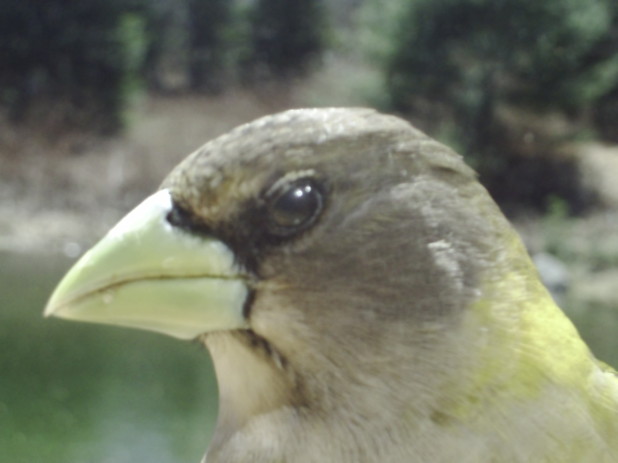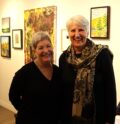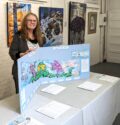Uncategorized
Why not let it be? Economic growth and ecological prosperity go hand in hand
May 29, 2014

By Nate Smelle
EVERY DAY MILLIONS OF winged creatures swoop, soar, flutter and buzz among us. For the most part though, the majority of these ancient species remain unnoticed as we go about our daily routines. Walking and talking softly with the Baillie Bird-a-thon crew along the heritage trail through Bronson Marsh, I was astounded by the depth of knowledge the group possessed.
With every peep, chirp, and tweet that sounded out from the tall grasses and tree tops, the group would stop to investigate. Persistently setting up scopes and cameras to catch a glimpse of these invisible birds singing from out of sight revealed a wealth of species hidden beneath the cover of their habitat.
Looking out on the marsh at first my eyes were drawn to the red, yellow and black flashes of the red-winged blackbirds. Peering a little deeper into the landscape one of the group noticed the long neck and beak of an American Bittern pop up from the marsh grasses and bulrush. Locating the nesting bird with the scope the whole group was able to see this incredible creature in its natural setting. Eventually this ornate and prehistoric looking bird spread its wings and lifted off from its resting place, casting a shadow over the group as it flew towards the sun.
Later that day I met up with the Nature Discovery Tour group at the Bancroft Railway Station. After enjoying a presentation on chimney swifts by Bancroft Field Naturalists club member Bill Oborne, the group made their way over to the old MTO building in Bancroft where this species-at-risk seasonally resides in its brick chimney. Last year during one count approximately 800 birds were observed as they plunged spiralling into the chimney in unison. Seventy birds were observed diving into the chimney on the tour Saturday, however, the numbers of birds are expected to rise after the birds leave their roosting place to nest.
Unfortunately the destruction and disappearance of suitable habitat such as large hollow trees, caves and open brick chimneys is causing this species to decline at an alarming rate. Watching the spectacle of the chimney swifts unfold as the sun went down I started thinking of all of the other species-at-risk experiencing a similar decline due to loss of habitat.
With the sentiment of austerity presented in the Bancroft budget still on my brain I then began considering different ways to creatively cut down costs for the municipality in a way that also encourages biodiversity to thrive. Thinking of all of the birds I had seen earlier that day camouflaged in the greenery of the Bronson Marsh, my mind wandered back to a time when I oncehad a job cutting grass in the suburbs that sprawl across what was once considered good farmland in the Niagara Region. During this time I left a hefty trail of devastation behind me as I rolled with blades slicing over millions of native plants, wildflowers, small mammals, snakes, frogs, insects, butterflies, and the list keeps going. Not intentionally wanting to kill these creatures living where they needed to be, the ecological toll I was tallying began to weigh heavy on me. In honour of the individuals I found diced up and shuttering in my path I started researching how each of these species fit into the ecosystem I was levelling for a quick buck. Without another opportunity to earn a living at that moment I decided that from then on I would take a more careful approach while cruising on one of my kubota tractors.
Soon when I started to notice more plants like milkweed in my path which I had recently discovered were beneficial as a food source and habitat for threatened species like the Monarch butterfly and other pollinators, I began purposely not cutting them down. At first my funky style of lawn maintenance seemed to go unnoticed by the management and the people living in these neighbourhoods, later on not so much.
It turned out that the more things I killed the more I species I had to research. Realizing the depth of interconnectedness in the field ecosystems I was destroying, the parks and medians I was cutting began to look like a series of pocket gardens full of native plants. Not quite providing the golf course look that was expected of me, my career in lawn maintenance did not last much longer.
The whole experience led me to think…what if we didn’t carve these neighbourhoods into monocultures? What if instead we planted them full of native plants to encourage the pollinators and wildlife that compose the biodiversity that drives our economy? We could even plant food in these spaces I thought.
Last year around this time when the wildflowers blossomed along the roadsides throughout the region I received a barrage of emails regarding a photo I took of the flowers growing along the side of Hwy. 62 south near Gaebel Road. Full of Orange Hawkweed, Milkweed, Viper Bugloss, and Daisies, the roadside looked like a living painting. The day after the photo was taken the flowers were gone as were most of the inhabitants that were living in this colourful space. The majority of the emails I received were expressions of frustration towards the destruction of this beautiful and critical habitat for so many species.
Of course some areas need to be cut back and trimmed for public safety, however, there are a lot of areas that would, should and could remain more attractive and ecologically functional if they were left alone or maintained with more care. Imagine the potential savings in fuel costs and tractor maintenance, which otherwise would have gone up in smoke. These funds could even be used to hire or re-train the town staff necessary to maintain these new urban green spaces.
Then again maybe it is just easier to keep doing things the way they have “conventionally” been done. Right?

















